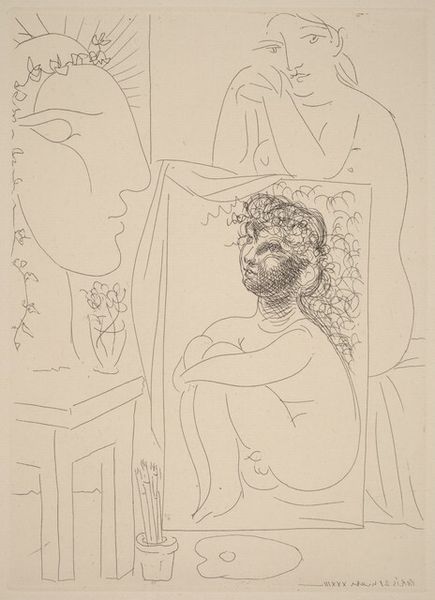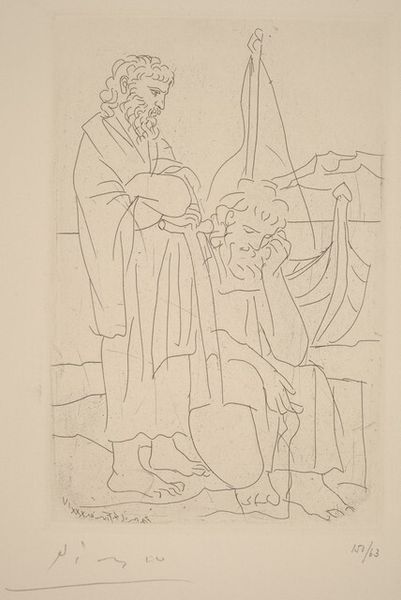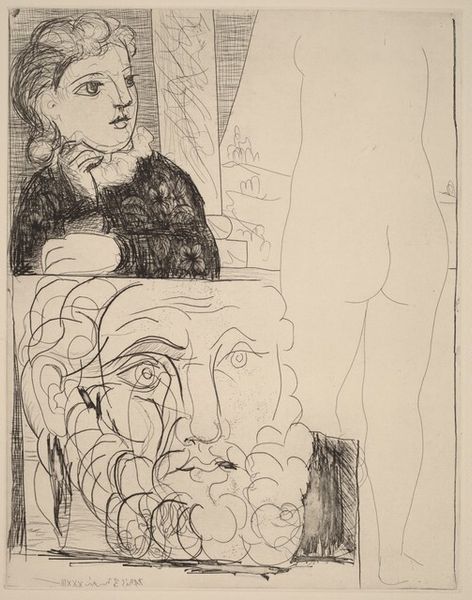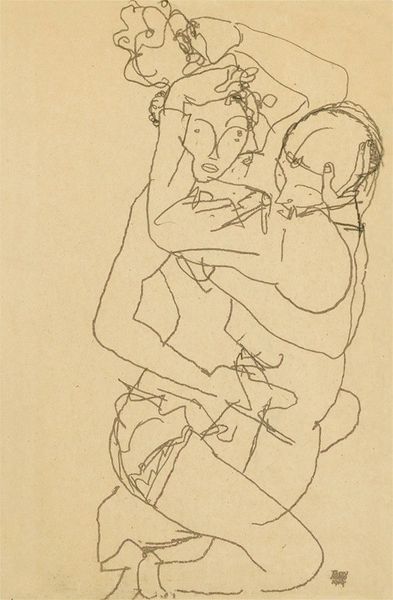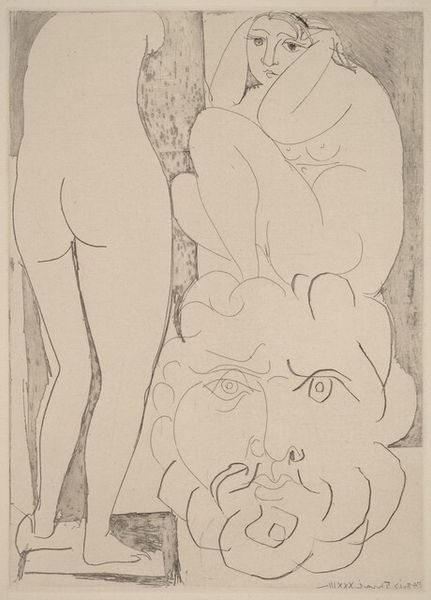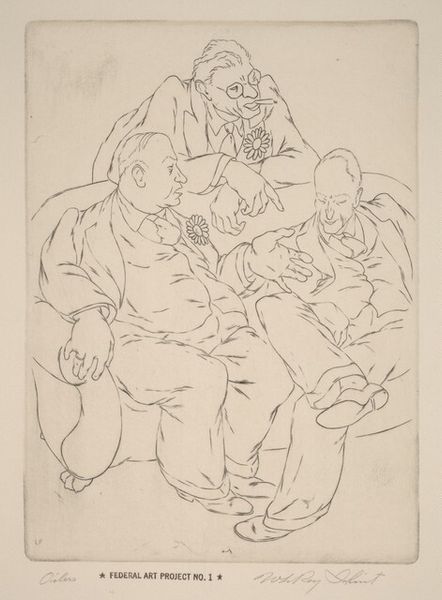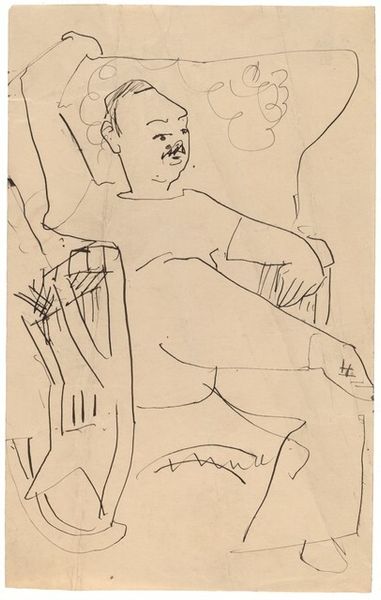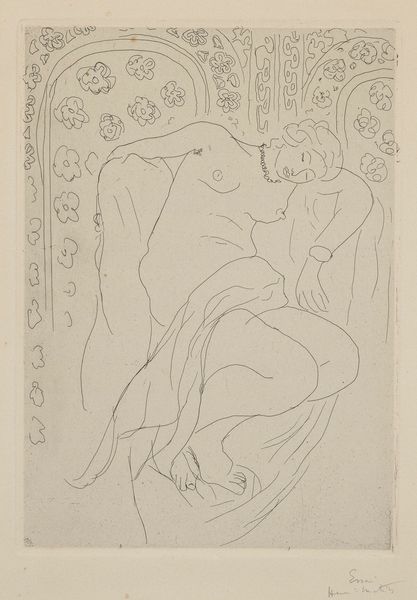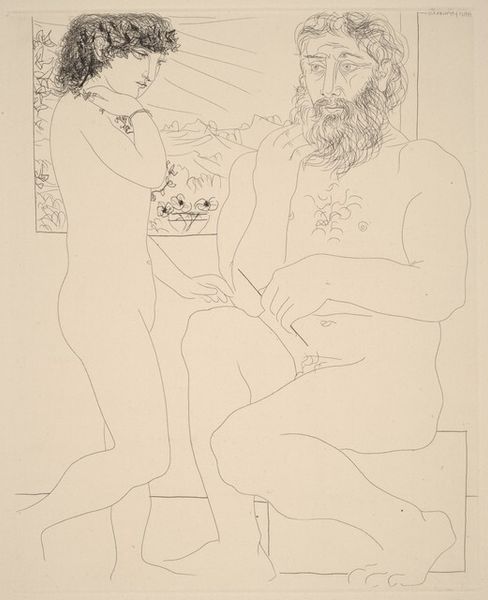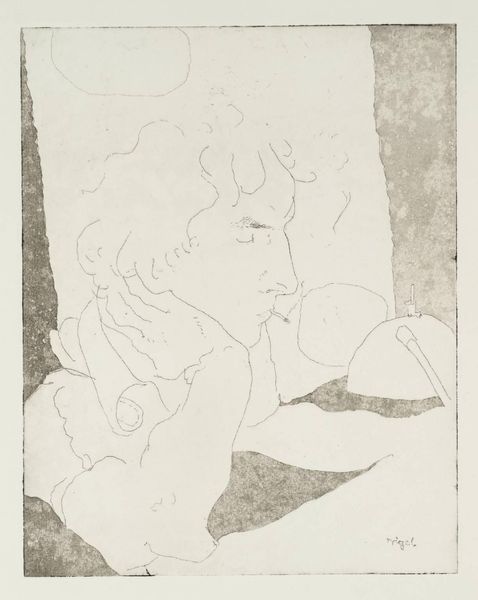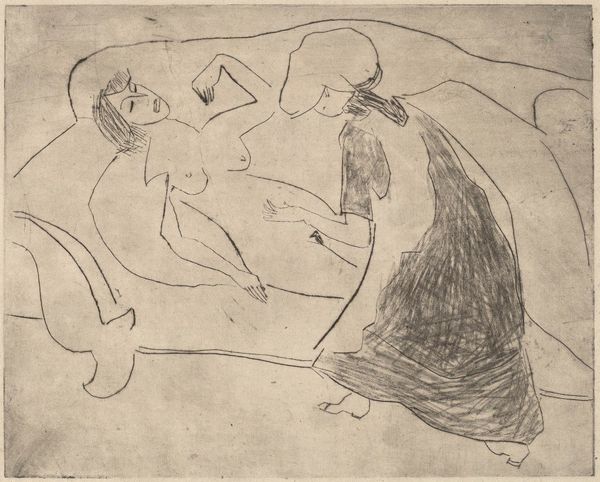
drawing, print, etching, sculpture
#
portrait
#
drawing
#
cubism
# print
#
etching
#
figuration
#
sculpture
#
line
#
portrait drawing
#
history-painting
Dimensions: plate: 26.7 x 19.2 cm (10 1/2 x 7 9/16 in.) sheet: 50.3 x 39 cm (19 13/16 x 15 3/8 in.)
Copyright: National Gallery of Art: CC0 1.0
Curator: Alright, let's talk about Picasso's etching, "Old Sculptor at Work," created in 1933. It's part of his Vollard Suite, a really incredible body of work. What's your first take? Editor: Stark, isn’t it? And very…contained. Those almost painfully thin lines, holding this whole scene together. It feels like watching someone breathe, or barely breathe, really. There's a quiet tension there that grabs you immediately. Curator: I see that. The starkness certainly comes from the etching technique itself, allowing Picasso to play with this raw simplicity of line. It reflects a return to classical themes he explored quite frequently. Think about it, he's engaging with artistic tradition, the sculptor as a hero. Editor: A hero? Hmm. More like a vulnerable contemplation of the artist's role, maybe even a premonition. That sculptor’s got a weary slump to his shoulders; the muse feels distant, almost clinical in her detached observation. There's something terribly lonely about the image. Is this a romanticisation or an interrogation? Curator: It’s both, of course! Picasso rarely allows simple answers. The classical elements are certainly present, in the idealised, statuesque form of the model. But, juxtapose this with the fractured representation and the emotional remoteness of the figures, and the romantic idea is immediately unsettled. There's this inherent tension. Also the figure himself might even represent him and his perception of the male gaze in those years. Editor: The gaze… definitely. And you're right about the fracture. That Cubist inheritance isn't just stylistic. It's about fracturing perception itself, forcing us to piece together not just the image but the story. That sculpture in progress seems to mock this, as it has no defining characteristics; but rather some loose sketches, not sculpted in a particular way. Curator: Exactly! And that unfinished aspect, it speaks to the continuous process of creation. The vulnerability in the moment of artistic creation laid bare for everyone to see. Editor: So it becomes a mirror, doesn't it? Reflecting our own process of viewing, of understanding. He’s brilliant in inviting a viewer into the scene. Curator: Ultimately, it's a deeply complex reflection on art, artists, and the power—and perhaps the burden—of artistic creation. Editor: Yeah, and now I am left pondering the complexities and feeling ever-so-slightly melancholy! A testament to its lingering effect, wouldn’t you say?
Comments
No comments
Be the first to comment and join the conversation on the ultimate creative platform.

